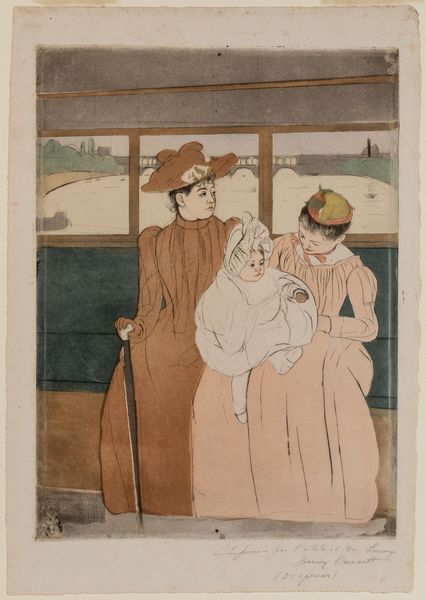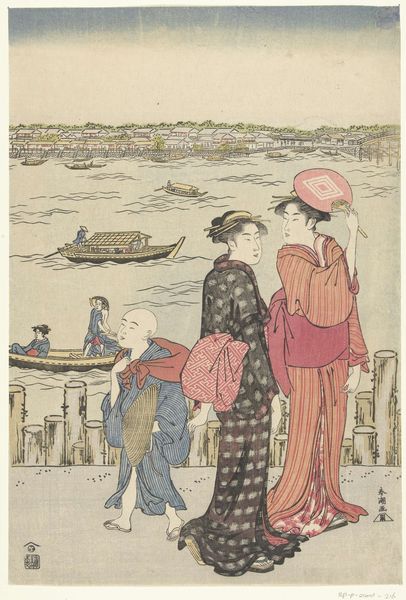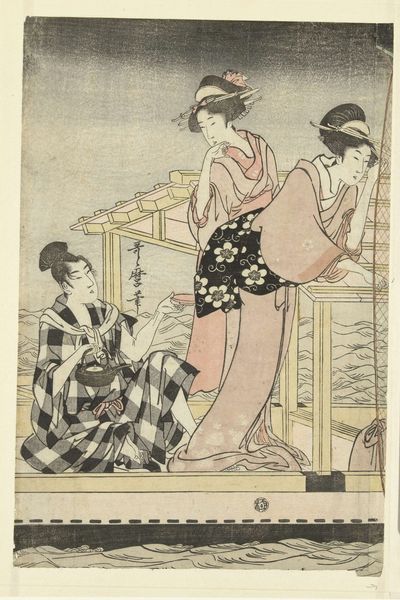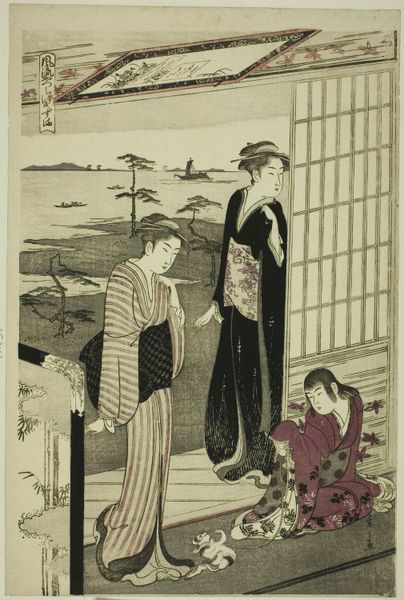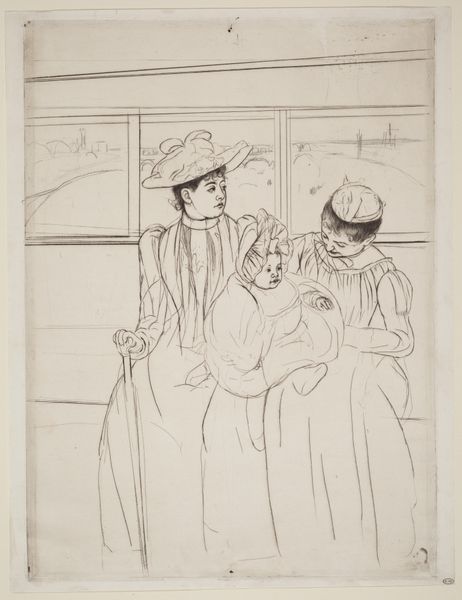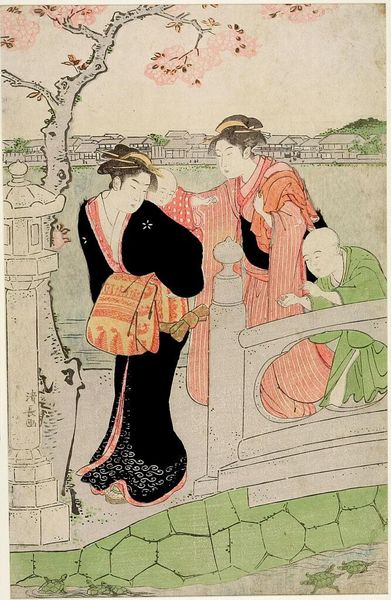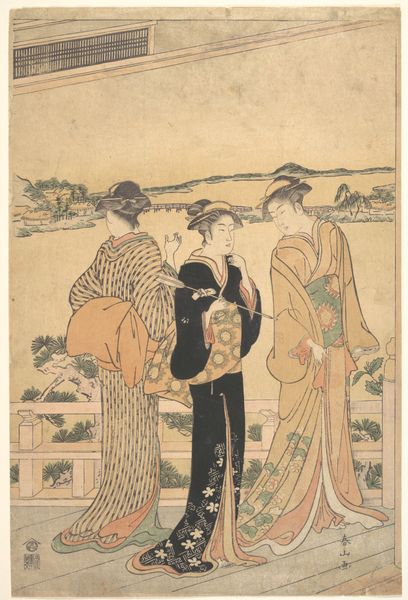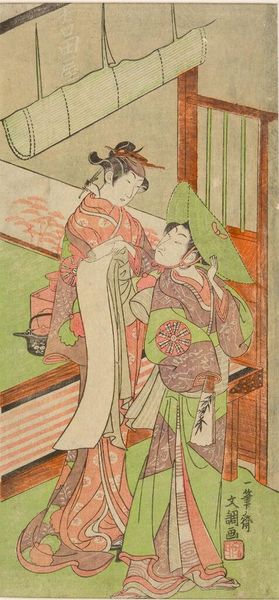
watercolor
#
portrait
#
water colours
#
impressionism
#
figuration
#
watercolor
#
intimism
#
genre-painting
Copyright: Public Domain: Artvee
Curator: Welcome. Today, we are looking at "In the Omnibus" by Mary Cassatt, likely executed in 1890 or 1891. The medium is watercolor. Editor: It strikes me as both intimate and detached. The figures seem self-contained, even within such close proximity. The subdued palette adds to this sense of quiet introspection. Curator: I agree about the coloration. Note how Cassatt employs a limited range, mainly earth tones contrasted with muted blues and pinks, creating spatial recession as the background seems far removed in tone and focus. There's also an interesting interplay of flat planes and subtle modeling. Editor: The omnibus itself becomes a kind of modern ark—the women safeguarding the future, embodied in the child. Historically, public transportation emerged with evolving roles for women outside domestic spheres. The journey becomes emblematic of change, both societal and personal. Curator: Absolutely. Considering that Cassatt came from a wealthy background, such themes recur in her representations of women in public, often juxtaposed with the traditional imagery of domesticity. Also, look closely at the varying degrees of finish; the faces, especially the child’s, are delicately rendered, drawing our immediate attention, whereas much of the clothing is sketched rapidly. Editor: Yes, the symbolic weight placed upon the maternal gaze is evident here as well—the second woman bends down to the baby in what seems to be quiet interaction and tender attentiveness, an enduring signifier of womanhood through visual culture. It's like a private moment in a public space. Curator: Precisely. It shows Cassatt's command over structure despite what at first appears to be impressionistic style; lines and geometric figures create strong composition. Editor: Well, it makes one consider how symbols embed themselves into our very perception—we bring these layers to our interpretations and add meanings that transcend pure formalism. It also highlights our engagement with art is rarely a detached act but very emotive, especially viewing figuration such as in this picture. Curator: It also allows us to acknowledge the complex construction of this simple snapshot—there are subtleties here that require attention. Editor: I am moved by its layered simplicity, which mirrors human experience itself. Thank you for pointing that out.
Comments
No comments
Be the first to comment and join the conversation on the ultimate creative platform.

